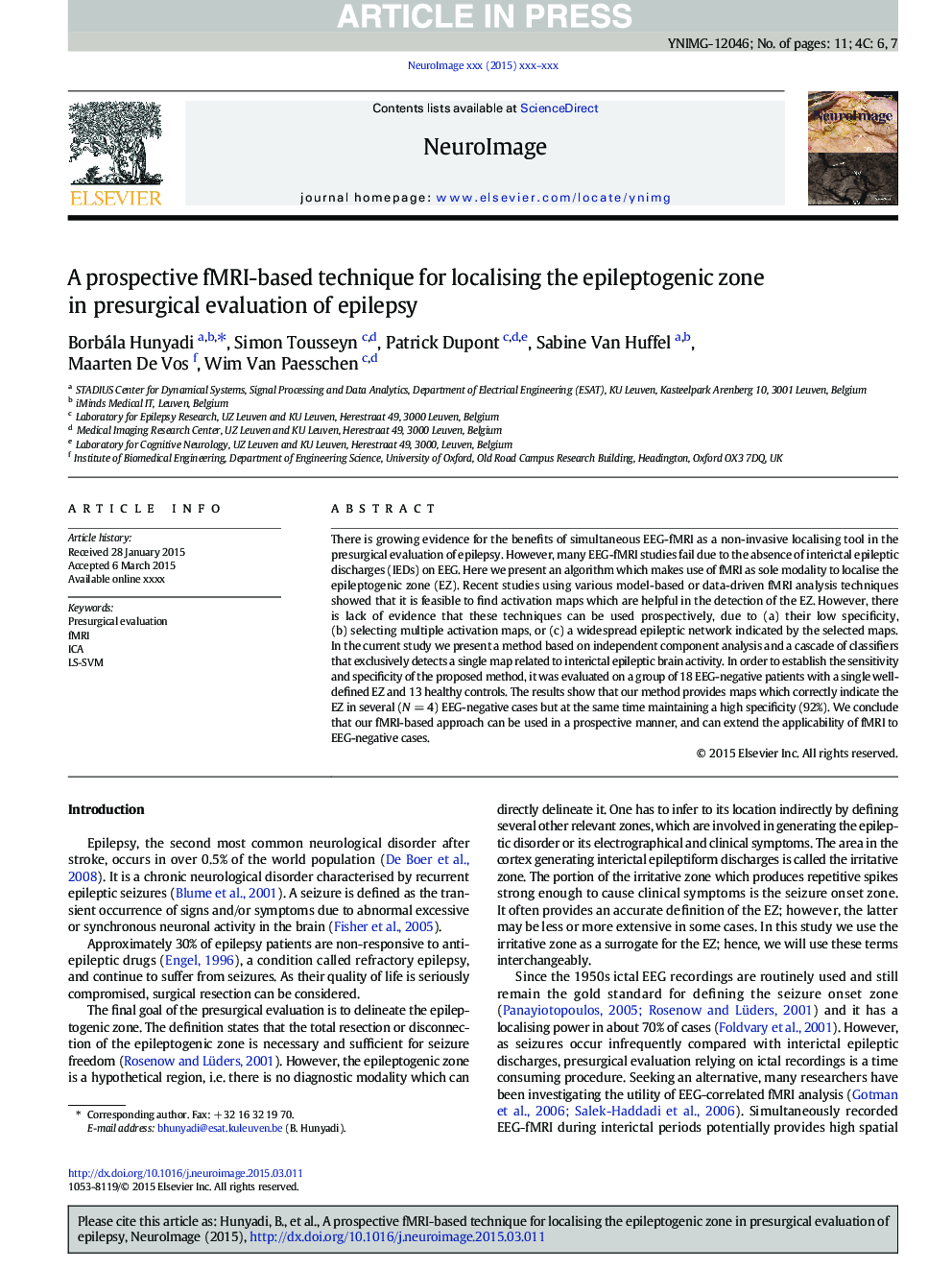| Article ID | Journal | Published Year | Pages | File Type |
|---|---|---|---|---|
| 6025273 | NeuroImage | 2015 | 11 Pages |
Abstract
There is growing evidence for the benefits of simultaneous EEG-fMRI as a non-invasive localising tool in the presurgical evaluation of epilepsy. However, many EEG-fMRI studies fail due to the absence of interictal epileptic discharges (IEDs) on EEG. Here we present an algorithm which makes use of fMRI as sole modality to localise the epileptogenic zone (EZ). Recent studies using various model-based or data-driven fMRI analysis techniques showed that it is feasible to find activation maps which are helpful in the detection of the EZ. However, there is lack of evidence that these techniques can be used prospectively, due to (a) their low specificity, (b) selecting multiple activation maps, or (c) a widespread epileptic network indicated by the selected maps. In the current study we present a method based on independent component analysis and a cascade of classifiers that exclusively detects a single map related to interictal epileptic brain activity. In order to establish the sensitivity and specificity of the proposed method, it was evaluated on a group of 18 EEG-negative patients with a single well-defined EZ and 13 healthy controls. The results show that our method provides maps which correctly indicate the EZ in several (NÂ =Â 4) EEG-negative cases but at the same time maintaining a high specificity (92%). We conclude that our fMRI-based approach can be used in a prospective manner, and can extend the applicability of fMRI to EEG-negative cases.
Keywords
Related Topics
Life Sciences
Neuroscience
Cognitive Neuroscience
Authors
Borbála Hunyadi, Simon Tousseyn, Patrick Dupont, Sabine Van Huffel, Maarten De Vos, Wim Van Paesschen,
